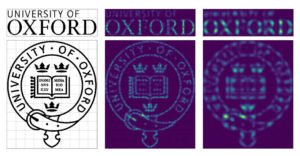Super-resolution imaging to surpass diffraction limit

Limited by Rayleigh
What do biotech, smart mobility, earth observation, and astronomy have in common? All these industries acquire key information through images – and all of them want better, faster, and cheaper information acquisition to advance their research and product development.
Bigger lenses or sensors are expensive. Software post-processing of images is slow and uncertain. Ultimately, most industries feel restricted by Rayleigh’s diffraction limit – i.e. the minimum resolvable level of detail using traditional optics.
In the last decades, several techniques for circumventing Rayleigh’s diffraction limit have emerged, defining the field of super-resolution imaging.
However, they come with constraints: near-field imaging is limited to surface studies due to the close working distance; non-linear imaging is highly sample-dependant and even risks sample alteration to achieve resolution improvement.
Therefore, finding a technique that achieves super-resolution without any interaction with the object has become highly desirable not only to scientists who seek an intellectual quest but to end-users who seek better and faster super-resolution imaging solutions.
The solution
Taken on the challenge, our group at the University of Oxford has developed a unique approach “Hermite-Gaussian Imaging” (HGI) that achieves sub-Rayleigh resolution by passively analysing light emitted from samples. As HGI is linear-optical and operational in the far-field, our setup could be easily integrated into traditional light microscopes. It is also fast, non-invasive, and universally applicable. We believe our HGI-based approach has great potential to transform biological and material imaging.
Relying on a pixel array and measuring intensity at each pixel does not utilise all of the information that the light field delivers to us. In our approach, we instead measure the correlation of electromagnetic field amplitudes at different transverse positions. In this way we extract further information about the incoming field, thereby enabling resolution enhancement. This enhancement can be by a factor of two or three as compared with the traditional approach.
about this technology

